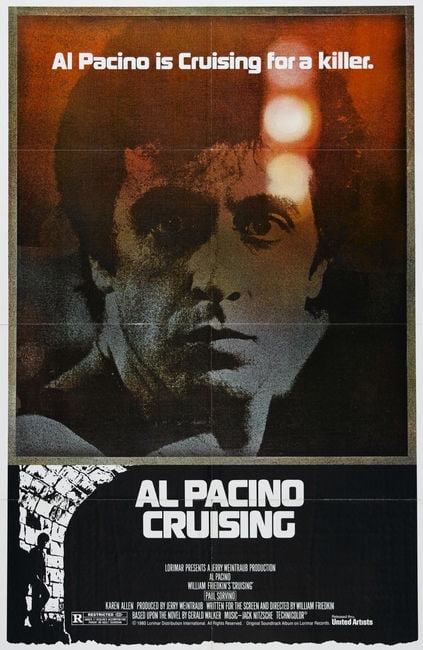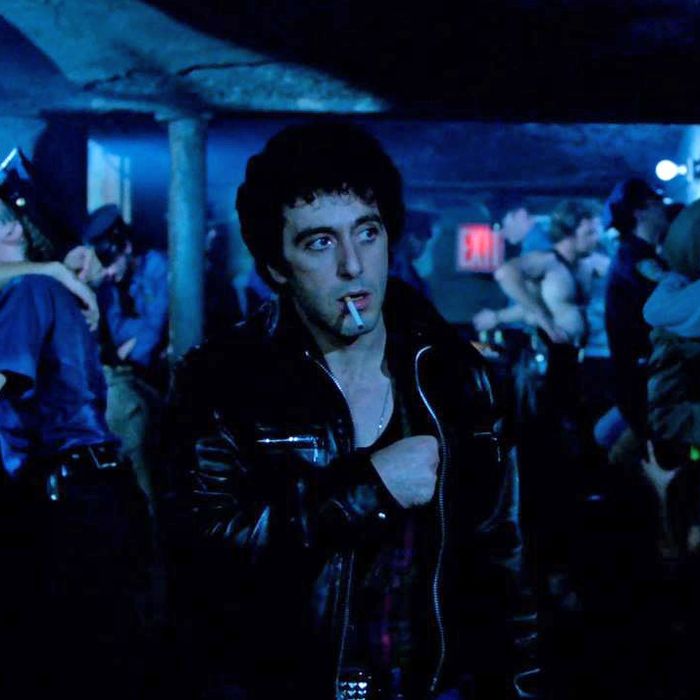Table Of Content

After they leave, Larry transforms into Milton, who breaks the fourth wall and declares, "Vanity—definitely my favorite sin." Kevin is assigned to represent billionaire Alex Cullen, accused of murdering his wife, his stepson, and a maid. As a result, Kevin sees even less of Mary Ann, and begins to fantasize about his co-worker, Christabella. Meanwhile Mary Ann has visions of the partners' wives becoming demonic, and has a nightmare about a baby playing with her removed ovaries. After a doctor declares her infertile, she begs Kevin to return them to Gainesville, but he refuses.
Production Design
This Al Pacino Thriller Turned Into One of the Most Hurtful Movies Ever - Collider
This Al Pacino Thriller Turned Into One of the Most Hurtful Movies Ever.
Posted: Tue, 21 Mar 2023 07:00:00 GMT [source]
And there is some implied evidence that by the end of the moviePacino is moving toward a gay orientation and does not find S&M all thatunspeakably out of the question. Thevalidity of these arguments is questionable and I plan to discuss them inanother article. For the purposes of this review, however, let it be said thatthe dramatic power of “Cruising” seems to have been very negatively affected bythe protests against the movie. There’s evidence here that key elements of AlPacino’s central role were altered or compromised so that Pacino’s owninvolvement in the events of the plot is deliberately left unclear. Since themovie is about his involvement – much more than it’s “about” the challenge ofsolving the killings – what we’re left with is a movie without the courage todeclare itself. A mediocre film that has made a great rallying point for our anger and frustration over the treatment of gays in movies.
Art Direction

Milton's demonic rage burns Christabella alive, revealing his demonic form before turning into a winged angel who resembles Kevin. The Devil's Advocate received mixed reviews, with critics crediting it for entertainment value and Pacino's performance. It grossed over $153 million at the box office and won the Saturn Award for Best Horror Film. It also became the subject of the copyright lawsuit Hart v. Warner Bros., Inc. for its visual art. Well, prior to Bateson's conviction, Friedkin had visited him at Rikers Island, where the two "had a very pleasant chat," Friedkin said in part one of the documentary on the film. Doing your research is important, but talking to a killer of gay men to get inspiration to make a movie that showcases their brutal deaths might be a bit extreme.
Interior. Leather Bar.
He rents an apartment in the area and befriends a neighbor, Ted Bailey, a struggling young gay playwright. Burns's undercover work takes a toll on his relationship with his girlfriend Nancy, due to his inability to tell her the details of his current assignment and his developing friendship with Ted, who himself is having relationship problems with his jealous and overbearing dancer boyfriend, Gregory. Butwhen director William Friedkin announced plans to set a movie in that milieu,and to film it as much as possible on location, the New York gay community roseup in protest. “Cruising,” they said, would present a distorted view of gaylife.
Release
"Cruising" may not rank best or worst as far as Al Pacino movies go, but it has certainly garnered some serious notoriety. If you like crime thrillers or gay cinema, it's a must-see, even if it's just so that you can shape your own personal opinion of it. We love Al Pacino, which is why we can't (and won't) stop talking about him. The former comedian has a legendary career, spanning five decades and counting, which has made him one of the most recognizable stars in Hollywood and earned him millions. Over the course of a career as long as Pacino's, any actor would eventually find controversy of some magnitude, and Pacino is no exception. Although the actor has taken some inappropriate roles in the past, the 1980 film "Cruising" can't be topped, as the film itself — not just Pacino's part — was at issue.
Sabrina Carpenter Swirls ‘Saltburn’ Into ‘Nonsense’ Outro in a Nod to Barry Keoghan at Coachella
They blocked off streets, restricted residents' access to apartment buildings where scenes were being filmed, and cut the electricity of apartments next to where they shot to reduce background noise — all without advance warning. One resident even reported that her apartment door's lock had been superglued in retaliation for her complaints about a prop man illegally covering up her mailbox label. According to the New York Times, July 26, 1979, was a day of action for gay activists seeking to halt the production of "Cruising." First, representatives of the National Gay Task Force requested that Mayor Ed Koch withdraw the film's shooting permit (a request he denied, citing censorship concerns). Then, there was a march of about 1,000 protestors from New York's Pier 40, where the production team was headquartered, to a filming location in Greenwich Village, where they blocked traffic in Sheridan Square for half an hour.
Though Milton seems to dismiss Kevin's concerns, Eddie is beaten to death in Central Park. Themurder investigation itself Is complicated enough on the surface. But carefulthought after the movie will reveal that the plot structure is basically amess. That isn't supposed to matter, I think, because the movie is reallysupposed to be about Pacino's progressive involvement with the S&Msubculture.
Francis Ford Coppola’s ‘Megalopolis’ Faces Uphill Battle for Mega Deal: “Just No Way to Position This Movie”
The Motion Picture Association of America (MPAA) originally gave Cruising an X rating. When Friedkin sought to restore the missing footage for the film's DVD release, he discovered that United Artists no longer had it. He believes that UA destroyed it.[3] Some obscured sexual activity remains visible in the film as released,[9] and Friedkin intercut a few frames of gay pornography into the first scene in which a murder is depicted. In the movie, Al Pacino plays NYPD Officer Steve Burns, who is sent undercover to investigate a series of murders after body parts start turning up in the Hudson River. Police suspect that the killer frequents New York's leather bars to pick up victims that willfully follow him into secluded spaces where the killer overpowers and stabs them to death.
Sincethe movie fudges on that too, though, we're finally left in a state ofexasperation. And the movie's final scene-Pacino's girlfriend puts on hisleathers and clanks toward him as the screen fades to black-is a complete redherring. Altogether a very bad movie with its many uncertainties as well as nonexistent development of any of its characters. Might not exactly be one of Friedkin or Pacino’s best film, but it sure is a compelling one, as well as an important, evocative time capsule.
She claims Milton raped her that day, and shows Kevin her body, covered with cuts and scratches. Knowing Milton was in court with him, Kevin believes she must have injured herself, and commits her to a mental institution. Eddie Barzoon, the firm's managing partner, discovers Kevin's name on the firm's charter and believes Kevin covets his job. Eddie threatens to inform the United States Attorney's office of the firm's dubious activities.
It would imply the small subculture of S&M was more prevalent than itis, and that, if gays were “into” violence, attacks on them would somehow bejustified. The film was intended to depict gay cruising as it existed at the Mineshaft, which does appear in the novel. However, that bar is not named in the movie because it would not allow filming.[6] Scenes from the movie were instead filmed at the Hellfire Club, which was decorated to resemble the Mineshaft. Regulars from the Mineshaft also appeared as extras,[7] and scenes were shot in streets and other locations near the Mineshaft.[8] Additionally, Pacino visited the Mineshaft while researching his role. Over the years, attitudes toward "Cruising" have changed, and William Friedkin has even begun to understand why there was so much controversy around the film.
All of these factors gave Friedkin the angle he wanted to pursue in making the film.[3] Jurgensen and Bateson served as film consultants, as did Sonny Grosso, who earlier had consulted with Friedkin on The French Connection. To secure an R rating for "Cruising," William Friedkin told Alex Simon for Venice Magazine in 2007 that he had to send the film back to the ratings board of the Motion Picture Association of America 50 times. Friedkin had to cut 40 minutes from the film, spending $50,000 on MPAA fees alone. This footage is now lost, but it became the inspiration for "Interior. Leather Bar," a 2013 film in which directors James Franco and Travis Matthews try to recreate the process of filming "Cruising" within the New York leather bar scene. Protesting was not the only form of direct action taken by gay activists in attempt to stop "Cruising" from ever making it to theaters — they also directly meddled with the filming itself.
Cruising glides along confidently thanks to filmmaking craft and Al Pacino's committed performance, but this hot-button thriller struggles to engage its subject matter sensitively or justify its brutality. Suddenly, Kevin finds himself back at the Gainesville courthouse, during the recess of the Gettys trial. Once the trial resumes, Kevin announces that he cannot represent his client, despite the risk of disbarment. Kevin's reporter friend Larry offers him a high-profile interview, promising to make him famous.
Even with the demonstrators cleared from the area, local businesses and residents of Christopher Street temporarily stopped the production of "Cruising" by locking their doors and posting signs saying "Stop the Movie 'Cruising,'" forcing the team to move a short jaunt north, out of the Village (via The Village Voice). On August 20, a group of 700 activists celebrated this victory by marching from Sheridan Square to the new location. The march turned violent as police officers on horseback charged a crowd on West Street, brutally attacking one protestor before arresting him for "endangerment, resisting arrest, and harassment." The success of the protests certainly wasn't without its casualties. And itsfailure to commit itself would be less annoying if it weren’t for the fact thatthe whole thrust of the movie is toward setting up those questions –which theending then leaves deliberately and confusingly unanswered.
Now it’s possible to envision, thanks to a supercut created by YouTube user AMDSFILMS. Kevin, his mother Alice, and his case manager Pam Garrety, visit Mary Ann at the institution. Seeing Pam as a demon, Mary Ann hits her, barricades the room, and commits suicide.
Clubslike that thrive in all the big cities, and their promise of danger is usuallyjust atmosphere. Philip D'Antoni, who had produced Friedkin's 1971 film The French Connection, approached Friedkin with the idea of directing a film based on New York Times reporter Gerald Walker's 1970 novel Cruising, about a serial killer targeting New York City's gay community. D'Antoni tried to attach Steven Spielberg, but they were not able to interest a studio. This movie represents the only film soundtrack work by the punk rock band the Germs. They recorded six songs for the film, of which only one, "Lion's Share," appeared.

No comments:
Post a Comment